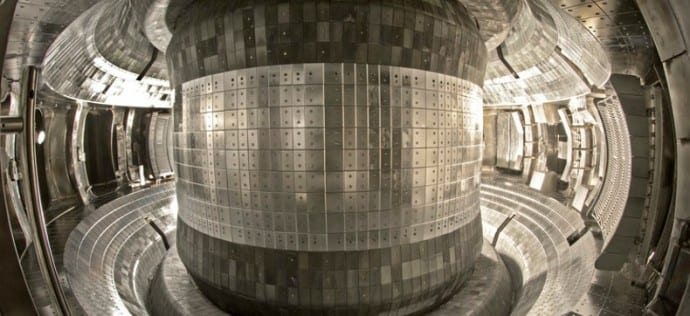Chinese scientists create record by hitting 90 Million °F For 102 Seconds which is three times hotter than the Sun
Scientists in China were able to heat plasma to three times the temperature of the core of our sun using nuclear fusion – a temperature of 90 million °F – for an impressive 102 seconds, as they continued their search to derive energy from nuclear fusion.
They have surpassed the nuclear fusion experimental device referred to as the Wendelstein 7-X (W7-X) stellerator developed by a team of German researchers from the Max Planck Institute that managed to heat hydrogen gas to 80 million degrees Celsius, and sustain a cloud of hydrogen plasma for a quarter of a second.
According to a statement on the institute’s website last Wednesday, the experiment was conducted on a magnetic fusion reactor at the Institute of Physical Science in Hefei, capital of Jiangsu province.
The experiments were carried out in a donut-shaped reactor, officially known as the Experimental Advanced Superconducting Tokamak (EAST). The reactor was able to heat a hydrogen gas – a hot ionised gas called plasma – to about 50 million Kelvins (49.999 million degrees Celsius). The interior of our sun is calculated to be around 15 million Kelvins.
The plasma can be contained by careful control of intense magnetic fields in a tight ring by running through the center of the donut’s circular cross section. In other words, the walls of the structure are never directly exposed to the high temperatures of the plasma.
For the long term goal of such fusion reactors, it is very necessary to make sure that those temperatures can be sustained for long period of time, as a huge input of energy is required to get them started. But, if they end up stopping too soon, the reaction is net negative in energy terms. Such high energies cause great instabilities making it difficult to confine them, as controlling such intense heat is tough. Therefore, it is a positive step indeed for running an experiment at such temperatures for 102 seconds.
It’s not the hottest temperature ever created on Earth. So far, the hottest temperature to have been created artificially in the lab remains that reached by the gargantuan Large Hadron Collider (LHC) at CERN, which managed to achieve temperatures of 4 trillion degrees Celsius back in 2012. However, those conditions last for the sheer flicker of time, which is inadequate for creating energy.
The ultimate goal of China’s team is to hit 100 million degrees Celsius now, and sustain the resulting hydrogen plasma for over 1,000 seconds, or 17 minutes. In the meantime, now that their ‘proof of concept’ experiment is out of the way, the German team says it could possibly sustain its plasma for as long as 30 minutes.
However, most scientists who are in agreement advocate that the long-yet-intense burn required for fusion needs to be around 180 million °F, which means we are likely decades away from actually connecting nuclear fusion to solve humanity’s energy problems.

Stealing tech from U.S. companies seems to be working out for the Chinese.